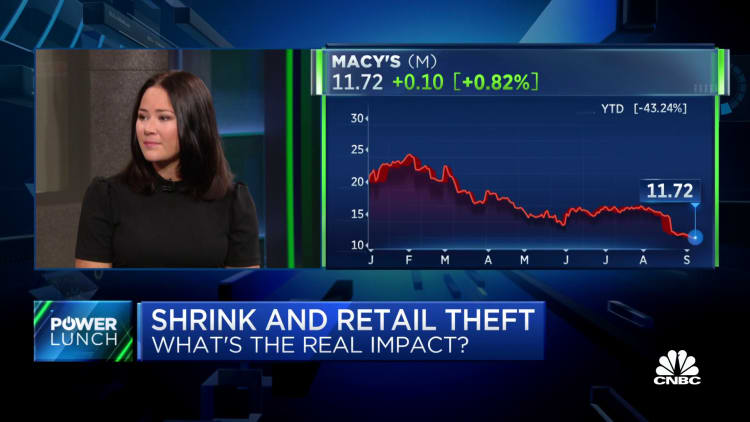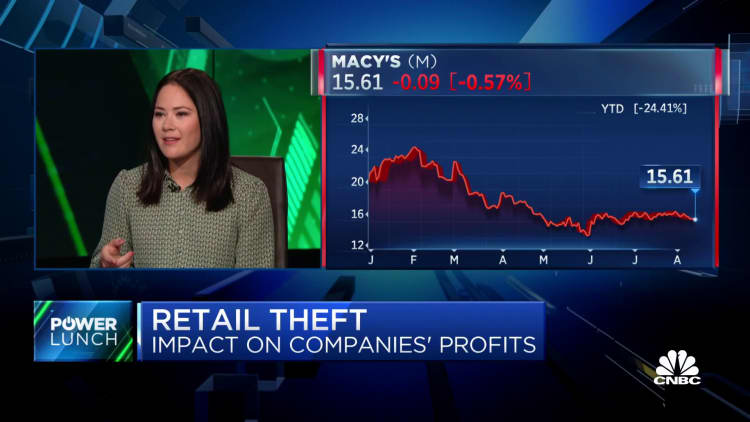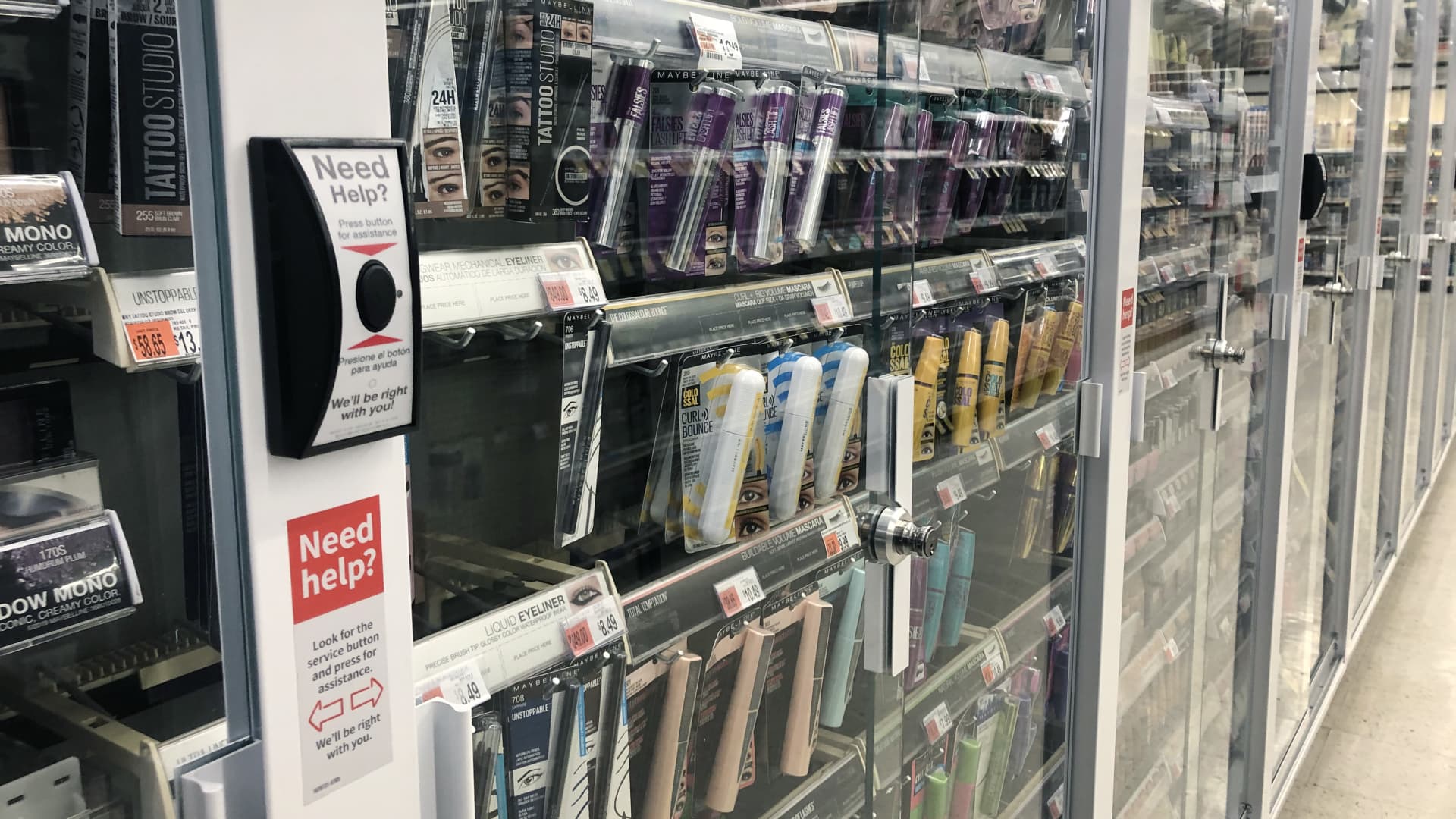
A range of retailers are again blaming shrink as one of the reasons they saw another quarter of lackluster profits.
But some of those companies have started to offer more detail than ever on how much shrink, or items lost to factors like external or employee theft, damage or vendor fraud, is cutting into their bottom lines.
At the same time, certain retailers pulled back on their contention that organized theft is a primary cause of losses, as scrutiny grows over claims about how much crime contributes to their struggles.
During second-quarter earnings reports in August and September, nearly two dozen retailers said shrink has continued to weigh on profits. But the details each company provided, and the explanations they gave for losses, varied widely.
Many of them said that shrink is at an all-time high and said the industry is struggling to control it. Still, it’s difficult to compare the losses to past years because most of the companies have never previously disclosed how much shrink cost them.
Generally, the inventory losses are only a small fraction of the retailers’ net sales. They also pale in comparison to other factors squeezing margins, such as excessive discounting and promotions, according to a CNBC analysis of their balance sheets. While shrink is growing for some companies, losses are generally in line with the retail industry standard of 1% to 1.5% of sales — signaling the problem may not be as dire as certain retailers and trade associations have suggested.
Anti-theft locked beauty products with customer service button at Walgreens pharmacy, Queens, New York.
Lindsey Nicholson | Universal Images Group | Getty Images
When they reported second-quarter results, some companies like Target and Dick’s Sporting Goods offered clues into how much shrink is costing them and squarely blamed theft. Target lost about $219.5 million to shrink during the three months ended July 29, while Dick’s lost about $27.1 million during the same period, according to a CNBC analysis.
Meanwhile, Ulta and Foot Locker, which both blamed “organized retail crime” for losses in May, did not mention theft during their most recent results. They only used the term “shrink” when discussing how it squeezed margins.
Lowe’s has some of the highest shrink numbers among the companies analyzed by CNBC. It has blamed a range of factors for the losses. Sometimes it has said organized retail crime cut into profits, but in other cases, it blamed weather-related damages.
During its second quarter earnings call with analysts, the company said shrink was in line with the year-ago period. But its annual securities filing offered more detail: the retailer revealed that its shrink in fiscal 2022 ballooned to $997 million, up from $796 million in fiscal 2021.
Other companies, like Walmart, noted that shrink isn’t always related to retail theft when reporting second-quarter earnings. It said it remains focused on other causes of inventory losses that are “more controllable.”
Over the last few quarters, more and more retailers have called out shrink as a drain on profits and blamed theft for those losses. But they have offered few details about how much inventory losses are actually costing them. Experts have said some companies could be using crime as an excuse to distract from other operational challenges that drive shrink, such as poor inventory management and staffing issues.

Companies that have disclosed shrink numbers and explained to investors how they’re working to solve it show that they have a grasp on the problem, Sonia Lapinsky, a partner and managing director with AlixPartners’ retail practice, told CNBC. Others that loosely blame shrink and theft for plummeting profits without providing much more explanation may be trying to obfuscate internal issues, said Lapinsky.
“Are you clearing way more inventory because you mis-planned it and you mis-bought it and that’s what’s really getting a bigger profitability hit?” said Lapinksy. “But because everybody’s saying ‘let’s just blame the theft that’s increased and that’s out of my control,’ let me tell the Street that that’s why it’s happening and not disclose what’s really going on in operation.”
CNBC analyzed securities filings, earnings calls, press releases and other publicly available records to try to quantify how much shrink is costing retailers and how it compares to losses from other factors, such as excessive discounts.
No retailer explicitly disclosed their second-quarter shrink. Some revealed inventory losses as a percentage of sales, while others said how much they grew compared to the prior year. Using those clues, CNBC calculated shrink estimates for seven companies.
Here’s how much shrink is costing those retailers, based on a CNBC analysis.
Lowe’s
- Fiscal 2022 annual shrink loss: $997 million
Lowe’s has been citing shrink as a drag on earnings for years – well before other retailers started referencing it during earnings calls and press releases — and has called out theft as a driver.
However, theft didn’t appear to fuel lower profits at Lowe’s during its most recent quarter ended Aug. 4. During an earnings call, the home improvement retailer noted that shrink was in line with the prior-year period, when it reported a 0.1 percentage point hit to its gross margin “largely due to live goods damaged by unseasonable weather.”
On an annual basis, Lowe’s shrink has been steadily increasing at a rate that’s disproportionate to its revenue increases. Between the fiscal years ended Feb. 1, 2013 and Feb. 3, 2017, Lowe’s annual shrink consistently represented about 0.6% of its net revenue, according to a review of the company’s annual securities filings. However, that trend began to change during fiscal 2017. By the end of fiscal 2021, the hit to profits climbed to $796 million, or 0.8% of sales. During fiscal 2022, it rose to $997 million, or 1.03% of sales.
The inventory losses are still in line with the industry standard of about 1% to 1.5% of sales and tend to be less than profit drains from other factors.
For example, shrink during fiscal 2022 hit Lowe’s gross margin by 0.2 percentage points and was $201 million higher than the year-ago period. But high transportation costs and expenses associated with expanding its supply chain network squeezed profits by 0.3 percentage points. When taken as a percentage of sales, those costs came in at about $291 million.
Target
- Second quarter shrink cost: $219.5 million
Shrink bit into Target’s gross margin by 0.9 percentage points during its fiscal second quarter ended July 29, the retailer said in a securities filing. When taken as a percentage of sales, that amounts to a hit of about $219.5 million. For the first half of the year, shrink costs have reached about $444 million.
Target previously revealed it is on pace to lose more than $1 billion this fiscal year from shrink, up from $753 million last fiscal year.
Target’s shrink losses in fiscal 2022 represented about 0.7% of its total sales. They paled in comparison to how much profit the retailer lost from liquidating excess merchandise and taking other inventory actions during the year.
The company noted in its annual securities filing that “merchandising” hit its gross margin by about 3.4 percentage points, which amounted to about $3.66 billion shaved off of profits. Those costs included all of the promotion and markdowns Target took to clear out excess discretionary merchandise, plus higher product and freight costs.
Target’s margins have improved this year from fewer markdowns, lower freight costs and price increases.
Macy’s
- Second quarter shrink cost: $11.2 million
When the department store reported quarterly results for the period ended July 29, it posted a net loss of $22 million, or 8 cents per share. During a call with analysts, Macy’s executives said shrink reduced earnings per share by 4 cents.
That would amount to a loss of about $11.2 million during the quarter, based on the 279 million diluted shares it had at the end of the period. Those costs are after-tax.
On the other hand, a slowdown in credit card revenue made earnings 11 cents per share less than what Macy’s had projected for the quarter, which amounts to about $30.7 million.
During the prior quarter, Macy’s reduced its annual outlook in part because it expects higher costs from shrink. The retailer reduced its expected earnings per share by nearly a dollar to $2.70 to $3.20, down from a prior range of $3.67 to $4.11.
The retailer attributed the slashed outlook to “heightened macro pressures” but also an expected 12 cent impact from “increased [shrink] relative to our previous expectations.” That would amount to a projected shrink loss of about $33.5 million for the year.
During an interview with CNBC’s Courtney Reagan last month, Macy’s CEO Jeff Gennette said that shrink hit record levels in 2022 and it’s “going to be higher in 2023.” He attributed the uptick largely to “the change in organized theft.”
During Macy’s fourth-quarter earnings call in March, Gennette blamed the shrink increase on a sales channel shift from digital back to stores, along with increased theft.
TJX Companies
- Fiscal 2023 shrink cost: $150 million higher than the year prior
The off-price retailer told analysts it expects shrink to be flat during its fiscal 2024, which is expected to end in January 2024.
While it did not outline the expected inventory losses, TJX previously disclosed that shrink lowered its fiscal 2023 gross margin by about 0.3 percentage points compared to the prior-year period. When taken as a percentage of sales, shrink was about $150 million higher during its previous fiscal year compared to the year prior. Those figures are expected to remain steady during its current fiscal year.
Meanwhile, TJX’s 2023 full-year results took a 1.2 percentage point hit because of “incremental freight costs and higher markdowns,” Chief Financial Officer John Klinger said during a February call with analysts. Taken as a percentage of sales, that amounts to about $599 million.
Ulta
- Fiscal 2022 shrink cost: $71.46 million higher than the year prior
The makeup giant said shrink during fiscal 2022 was 0.7 percentage points higher than the previous year. When taken as a percentage of sales, shrink was about $71.46 million higher than in 2021.
Contrary to other retailers, shrink was the largest drag on Ulta’s earnings during fiscal 2022, according to a securities filing.
In May, it reduced its full-year outlook for its operating margin by 0.2 percentage points “primarily” because of shrink but also because of the “increased promotional environment.” Based on projected net sales of $11 billion to $11.1 billion, Ulta is factoring in about an additional $22 million in losses from shrink and promotions for the fiscal year. The company declined to tell CNBC how much of the 0.2 percentage points was related to shrink and how much was linked to promotions.
Dick’s Sporting Goods
- Second quarter shrink cost: $27.1 million
For the first time in nearly 20 years, Dick’s last month mentioned shrink as a drag on profits during its earnings call and press release. During the quarter ended July 29, Dick’s said its gross margin fell by about 0.8 percentage points because of theft-driven shrink. When taken as a percentage of sales, that amounts to a hit of about $27.1 million.
Efforts to liquidate excess inventory from the company’s outdoor category also cut into Dick’s gross margin by 1.7 percentage points, the company said. When taken as a percentage of sales, liquidation cost Dick’s about $54.8 million in the quarter – about double the effect of shrink.
Dick’s reduced its full-year outlook in part because of shrink. It expects sales of about $12.68 billion to $12.92 billion will be reduced by 0.5 percentage points, which would result in full-year profits being about $63.4 million to $64.6 million lower for the year due to shrink.
It’s now expecting earnings per share of $11.33 to $12.13, compared to a previous range of $12.90 to $13.80. The reduced outlook takes into account the retailer’s second-quarter results, increased shrink and higher selling, general and administrative expenses, which includes items like payroll and advertising.
Dollar Tree
- Second-quarter shrink cost: at least $87.84 million
In its latest quarterly securities filing, Dollar Tree noted that shrink had reduced its gross margin by 0.6 percentage points for the first half of the year. Based on sales of $14.64 billion for the first six months of fiscal 2023, shrink cost the company about $87.84 million. It’s unclear if that was the total amount of shrink Dollar Tree saw or just how much it increased compared to the prior year period.
Meanwhile, margins for the first half of the year were reduced by 2.2 percentage points because people bought more lower-margin items and the company saw higher costs, among other factors, according to a securities filing. Taken as a percentage of sales, that cut into profits by about $314.75 million.
Dollar Tree also factored shrink into its full year profitability outlook. It’s expecting earnings to be 55 cents per share lower than previously expected because of shrink and category mix, Chief Financial Officer Jeffrey Davis said on a call with analysts on Aug. 24.

